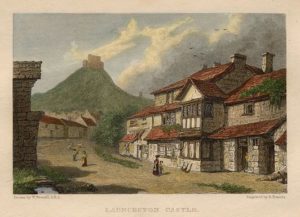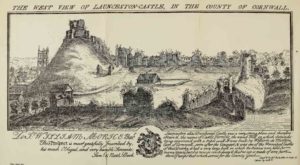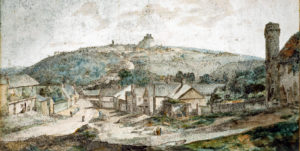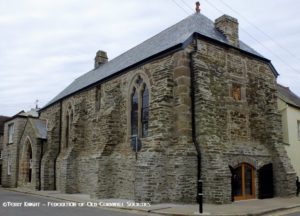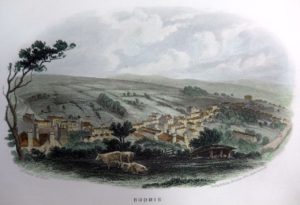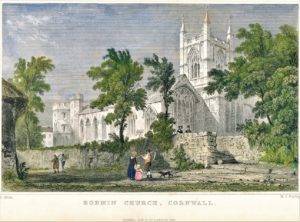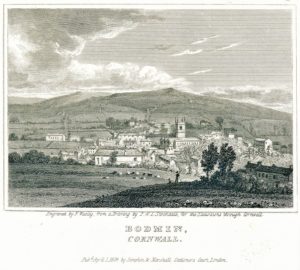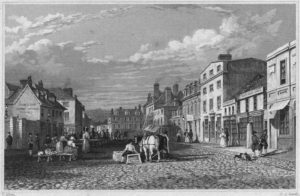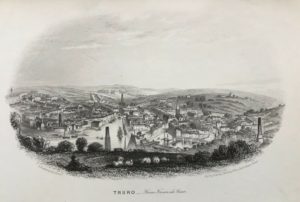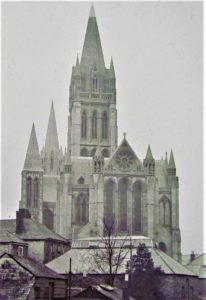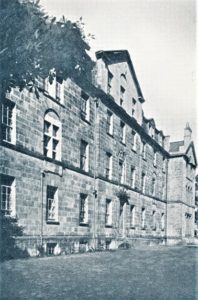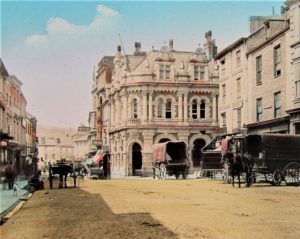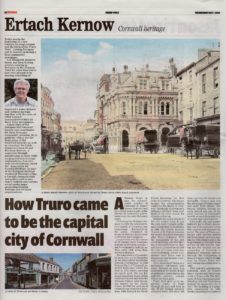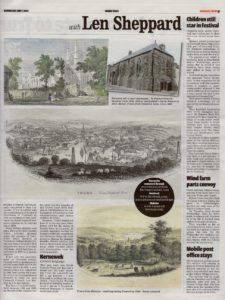How Truro came to be the capital of Cornwall
Today marks the beginning of a new Cornish heritage column and the birth of the Truro Voice joining Newquay and St Austell in having a local community newspaper. A brief introduction to Len Sheppard who has been writing articles relating to Newquay in the Newquay Voice for some time and is now very pleased to now be sharing something of Cornwall’s wider historic and cultural heritage together with the story of other Cornish communities within all three Voice newspapers. Len is Chair of the Newquay Old Cornwall Society and Coordinator for their Newquay community museum. He is Publicity Officer for the Federation of Old Cornwall Societies as well as Vice Chair for Celtic Congress Cornwall and Bewnans Kernow. A supporter through membership of many wide-ranging Cornish heritage organisations Len also runs his own group Association for Cornish Heritage. As part of the Newquay Heritage Archive & Museum it has a Cornish research room and gallery and he also runs a website and various social media pages promoting Cornish heritage and its many organisations.
Although Truro is now the acknowledged capital of Cornwall is wasn’t always that way and this article looks briefly at the change of Cornwall’s powerbases over the past thousand years.
Following the Norman conquest in 1066 the administrative capital of Cornwall was Launceston dominated by the castle completed by Robert of Mortain half-brother to William the Conqueror. Launceston was the centre of all County Court hearings, making Launceston wealthy and it continued to hold the assizes until 1838 when they moved to Bodmin.
The importance of Lostwithiel must also not be forgotten as the place which hosted the Stannary Parliament. In 1268 Richard Earl of Cornwall acquired Restormel Castle but died in 1272, before carrying out much work. His son Edmund completed much of the castle as it is now and built the Stannary Palace, later becoming known as the Duchy Palace. In 1338 the earldom of Cornwall was raised to a dukedom with Edward the Black Prince becoming the first Duke of Cornwall. The Palace became the administrative centre for the Duchy of Cornwall. Gradually Lostwithiel’s influence declined along with trade as its river access for shipping silted up.
Bodmin has many claims to the title County Town. It was the only large Cornish settlement mentioned in Domesday in 1086. The rebuilt Norman Church of St Petrocs remains the largest church in Cornwall after Truro Cathedral. With the completion of the new court buildings and the moving of the assize court to Bodmin from Launceston in 1838 the title of County Town also came to Bodmin where it remained until Truro rose to dominance and became Cornwall’s only city.
The loss of the railway station in Bodmin during the 1960's also contributed to the removal of the Crown Court to Truro.
First mention of Truro as a permanent settlement was when Richard de Luci was granted land by Henry II and established a castle during the mid-12th century, around which the town grew. Truro first grew as an important centre of trade through its port and then as one of the mining industry stannary town. The river 800 years ago was far deeper and navigable, Truro’s port had the advantage of being inland and safer from attack. The fishing industry during the early period was one of the main sources of Cornwall’s wealth along with production of copper and especially tin. Cornwall’s tin and copper industry led to Truro becoming one of the stannary towns that assayed and stamped the metal. The story of Truro continued with decline, during the Black Death, recovery during the 16th century and a rise to prominence through trade during the 18th century. During the 19th century and the connection of Cornwall to England’s mainline railway through the completion of Brunel’s Royal Albert Bridge over the Tamar, Truro railway station was established in 1860.
With talk of a cathedral for Cornwall, even St Columb Major was mooted, the honour went to Truro with The Bishopric of Truro becoming established in 1876 and Truro being granted the status of a city in 1877. The building of a cathedral commenced in 1880, mostly replacing the medieval St Mary’s Church, and was finally completed in 1910. Culturally Truro benefited with the establishment of the Royal Institution of Cornwall in 1818, as renamed in 1821, leading to the Royal Cornwall Museum opening on its current site in 1919.
Many further changes took place during the 20th century which included amongst many the opening of Cornwall’s major hospital at Treliske in 1968 gradually taking over from Cornwall’s first hospital the Royal Cornwall Infirmary, which had been established in 1799 as a miners hospital. Truro saw the establishment of Cornwall County Council with its headquarters at Old County Hall close to the railway station in 1899. A new headquarters completed in 1966, later seeing the transfer of the six Cornish district councils to form the new Cornwall Council, Lys Kernow as it is also known. The Truro Courts of Justice built between 1986 and 1988, on the site of the original castle, later saw the transfer of the Crown Court from Bodmin in 1996 finalising the centralisation of Cornwall’s chief administration and justice systems in Truro.
However, Truro would not have it all its own way, other towns vied for the status of largest town in Cornwall. St Austell currently having the largest residential population and Newquay being the most populous during the summer months. Future articles will look at these towns along with many other Cornish towns and communities over the coming months.
